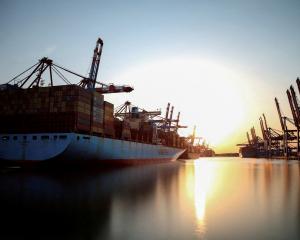Stockton-On-Tees, a small city in northeastern England, has only one claim to fame: the first railway tracks were made and laid in the city in 1822, and the first train ran on those tracks in 1825. But it might one day have another claim, also related to transportation: a locally based start-up company called Air Fuel Synthesis has just produced the first petrol from air and water.
It isn't a lot of petrol - five litres in two months - but Peter Harrison, the company's chief executive, hopes that within two years they will build a larger plant producing a tonne a day.
He envisages refinery-scale operations within 15 years.
"We've taken carbon dioxide from air and hydrogen from water and turned these elements into petrol," Mr Harrison told a conference at the Institution of Mechanical Engineers in London. Since the carbon dioxide that goes into the air when this fuel is burned exactly equals the amount that was taken out of the air when it was fabricated, it is a carbon-neutral fuel.
Provided, of course, that the electricity used in the process comes from renewable sources.
No wonder people who worry about global warming are excited about this breakthrough - but they should get excited slowly. The question was never if you could create a complex hydrocarbon like petrol from just air and water, but how much it costs to do it, compared to just pumping oil out of the ground and refining it.
The answer in the past has been: far too much. Splitting water molecules to get hydrogen is expensive in terms of the electricity required. Carbon dioxide is easily available as the by-product of burning coal or oil, but using that CO2 as the feedstock for artificial petrol only postpones the moment when it gets into the atmosphere by a few days or weeks.
If you want a truly carbon-neutral fuel, then the carbon dioxide you use must come straight from the air.
Prototype machines have been built (by Klaus Lackner, of Columbia University, and David Keith of the University, of Calgary) that can extract CO2 from the air in industrial quantities, but the price per tonne at the moment is about $US600 ($NZ734).
That's far too much, but as Prof Lackner points out, the cost of any new technology plunges steeply once it goes into volume production. And the cost of getting hydrogen from water may also drop dramatically.
Daniel Nocera, of the Massachusetts Institute of Technology, has developed a catalyst made from cobalt and phosphorus that can split water at room temperature.
"I'm using cheap, Earth-abundant materials that you can mass-manufacture," Prof Nocera said in 2008.
"As long as you can charge the surface, you can create the catalyst, and it doesn't get any cheaper than that."
So if the hydrogen is cheap, and the cost of extracting carbon dioxide from the air also falls dramatically, how much would it cost to combine them into petrol?
That's what Air Fuel Synthesis is working on: an integrated, scalable industrial process that takes carbon dioxide from the air and hydrogen from water, combines them into methanol, and then turns that into petrol.
Mr Harrison is cagey about his current production cost per litre: at the "proof-of-principle" stage, everything costs a fortune. But as he told The Independent' in a recent interview, "You're in a marketplace where the only way is up for the price of fossil fuel. At some point there will be a crossover where our fuel becomes cheaper." Prof Keith sees it the same way.
"You're selling this fuel, and they're burning it, putting carbon in the air, but then you're recapturing the same amount of carbon and selling it to them again. That's a business model that could conceivably take a whack at the global transportation market, which is the hardest part of the climate problem to attack."
Maybe Mr Harrison's process will not win the race to capture that market. Maybe the cheaper option will be to grow green algae in waste water or salt water, crush it to extract the oil from it, and then refine the oil into petrol, diesel and so on. (Exxon-Mobil is spending about $US100 million a year to develop that process.) But one way or another, the petrol we put in our vehicles in 25 years' time will probably not come out of the ground.
An entire industry employing millions of people, and the national budgets of entire countries, and much of the military planning by the world's great powers, all rest on the assumption that this will never happen. Of course it will. The pressure to cut greenhouse gas emissions will grow as the temperature rises, and the desire for "energy independence" will only get stronger as oil prices rise.
Back in the 1890s, it was still unclear whether the new "horseless carriages" would ultimately be powered mainly by petrol, steam or electricity. But it was already clear to those with any understanding of the interactions between markets and technology that the day of the horse-and-buggy was over, and the smart money was already getting out of buggy whips.
• Gwynne Dyer is an independent London journalist.












